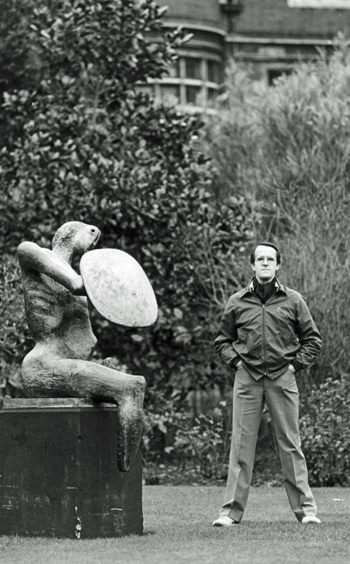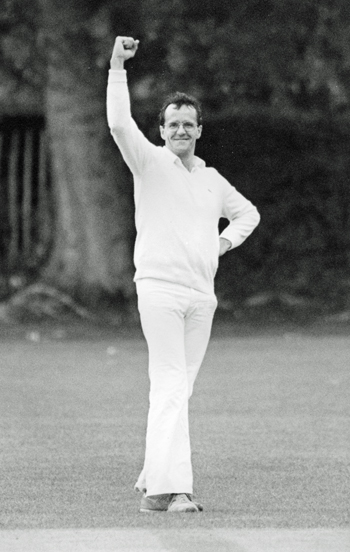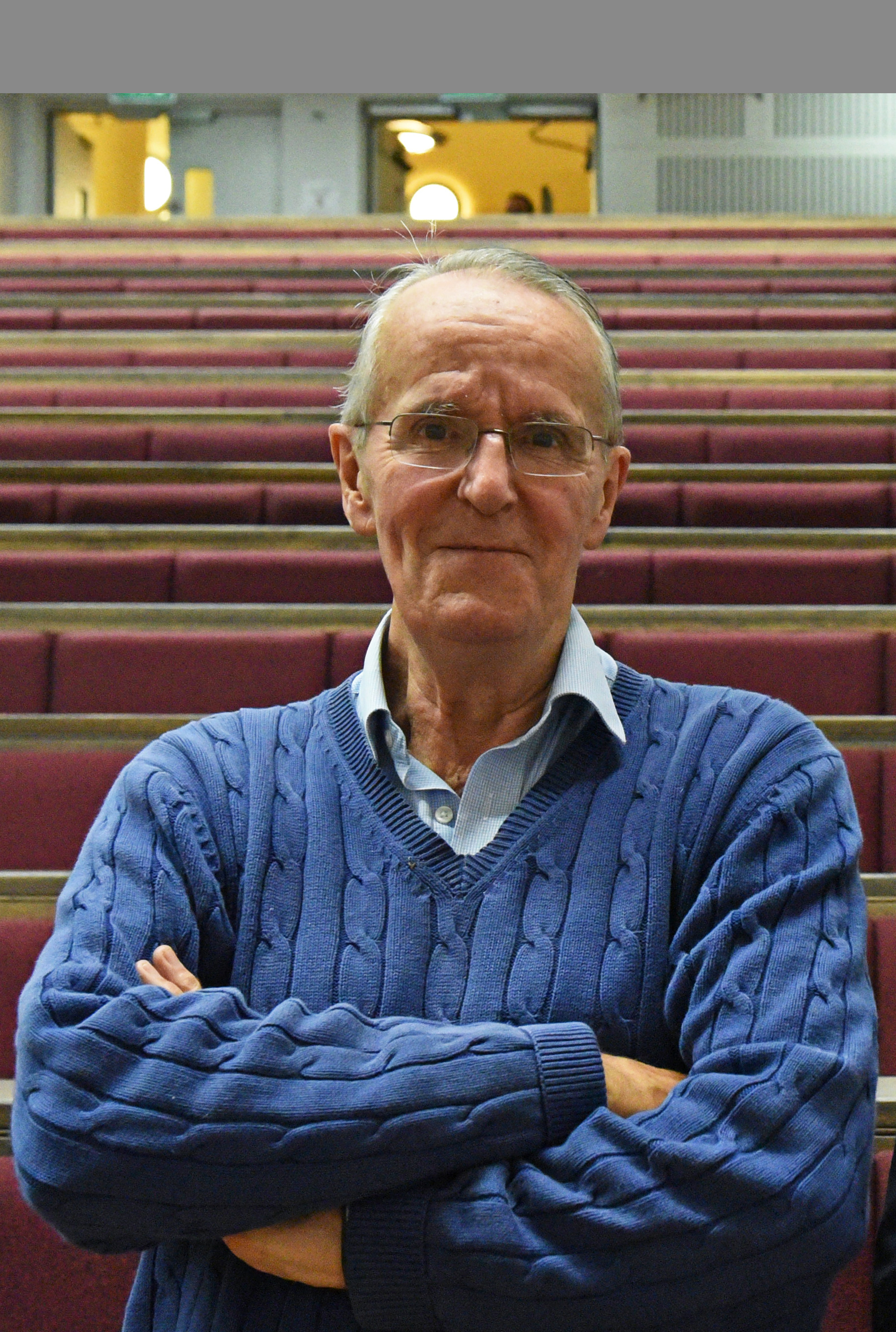Submitted by Rachel Aucott on Thu, 10/09/2020 - 16:56
Professor Simon Maddrell, FRS
1937 - 2020
William Foster, a colleague of Simon's in the Zoology Department, writes...
Simon was a man who liked a challenge – whether this came from a sporting rival, a baffled undergraduate, The Times crossword, or the chaotic financial state of the Company of Biologists. His eagerness to engage full-on with the world affected everything he did, and was part of the reason that he was such an inspiring research scientist and teacher. The most important challenge for him was to understand how insects worked, in particular how their internal state could be regulated by such thin wisps of tissue – the Malpighian tubules.
But Simon was also a teacher and, although never formally employed as a Lecturer, a vital element in the Department’s teaching programme for over 40 years. For many biology students, he was the first lecturer they came across, as he delivered the opening lectures in the Biology of Cells course. He and I gave the Insects lectures in 1B Animal Biology: Simon provided the antipasti of anatomy, followed by the red meat of physiology, and I finished off with helpings of ecology and evolution. He was the ideal colleague. He would quite often sit in on my lectures, just in case I said anything new that he could get his teeth into. As a result, I used to stuff new things into my lectures, in the hope of being rewarded by his broad smile from the back of the lecture theatre: there could be no better compliment.
Generations of alumni will have warm memories of Simon’s legendary supervisions. Most supervisors develop routines for patiently nudging their students down well-worn paths until eventually the full mysteries of the leading-edge vortex or the Homopteran filter-chamber are revealed. This was not Simon’s style at all. His instinct was to take his students on unpredictable black runs into uncharted territory, arguing quantitatively from first principles. This could be exhilarating, but sometimes a bit intimidating, for the students, who quickly realized that beneath Simon’s enthusiastic banter lurked a steely rationality. But stripping the subject down to its essentials put everyone on a more equal footing: you were no longer being taught but roaring off on a shared voyage of discovery.
I always looked forward to bumping into Simon, because he would generally say something unexpected and life-enhancing. On one such occasion, he suddenly said “Gosh, William. You are beginning to look like Robert Redford in late middle-age”. Very recently, I came across him as he made his way out of the Gate of Honour from Caius and up the steps towards Senate House Lawn. “I always come this way” he said “because of the view. I never tire of it. Aren’t we lucky to be able to see this every day? These formal 18th century buildings framing that enormous Horse Chestnut tree and the ramshackle domesticity of King’s Parade in the distance”. I marvelled at both the freshness of his gaze and his wish to share it with me. We are going to miss him.
Helen Skaer writes of her time as a young scientist in the Zoology Department:
Simon’s lab on the second floor was always the most welcoming and informal place to visit for any research student, bursting with a new result or, more often, an intractable problem. He always engaged with you, put forward alternative (and usually testable) interpretations of the data, and came up with nifty tricks to get around practical glitches. Later I collaborated with him on the developmental physiology of Rhodnius Malpighian tubules which involved collecting hatchling adults at 5am and running their tubules in vitro over the next 8 hours. He was indefatigable - entering into the adventure of early morning experiments, going shopping to find breakfast (Cambridge wasn’t full of cafes in those days), pouring over the results, and working out how they tied in with the natural life cycle of the blood-sucking bugs. His sense of fun, together with his unflagging enthusiasm and engagement tied to his scientific rigour and acumen, made him the perfect person to work with. His lab was always a hive of industry, with Brian Gardiner and later John Overton, ever cheerful, repeating Simon’s pioneering experiments until they judged the magic ‘n’ number sufficient for the graph, which had been in production from the earliest stages.
Nancy Lane, a colleague of Simon’s in the ARC Unit of Invertebrate Chemistry and Physiology, recalls a characteristic example of Simon’s imaginative approach to problem-solving, which hits three birds with one stone: reduced costs for a learned society, financial support for young people, and a jolly get-together:
In his role as Treasurer of the publishers of the Journal of Cell Science, Simon used to organise teams of post-docs and PhD students, and the children of colleagues from the Zoology Department, to sort, staple and pack up the journal reprints for mailing onto authors. This was evening work so it was also a social event, often done in the home of a member of the Department, and a job opportunity since the participants were paid generously by Simon.
Announcement by Howard Baylis, Head of Department. 11th September 2020
Simon was an exceptional insect physiologist, an inspiring teacher, a talented financial manager and an infectiously enthusiastic colleague. Simon was a PhD student with Sir Vincent Wigglesworth where he began his lifelong research career on insect physiology. After a post-doc at Dalhousie he joined the AFRC Unit of Insect Neurophysiology and Pharmacology led by John Treherne and located in Zoology. Here he performed elegant work using the Malpighian tubules in Rhodnius to investigate mechanisms of secretion and excretion. In 1976 he won the ZSL’s Scientific Medal and was made an FRS in 1981. When the AFRC unit closed Simon stayed in Zoology, eventually as Emeritus Honorary Professor. During this period he brought his skills in experimental physiology to bear on the Malpighian tubules in Drosophila, opening up new avenues in integrative physiology.
Black & white photos credit: John Overton
Colour photo credit: Julie Sarmiento Ponce.
Simon Hugh Piper Maddrell, ScD, FRS, 1937–2020 Journal of Experimental Biology Obituary



